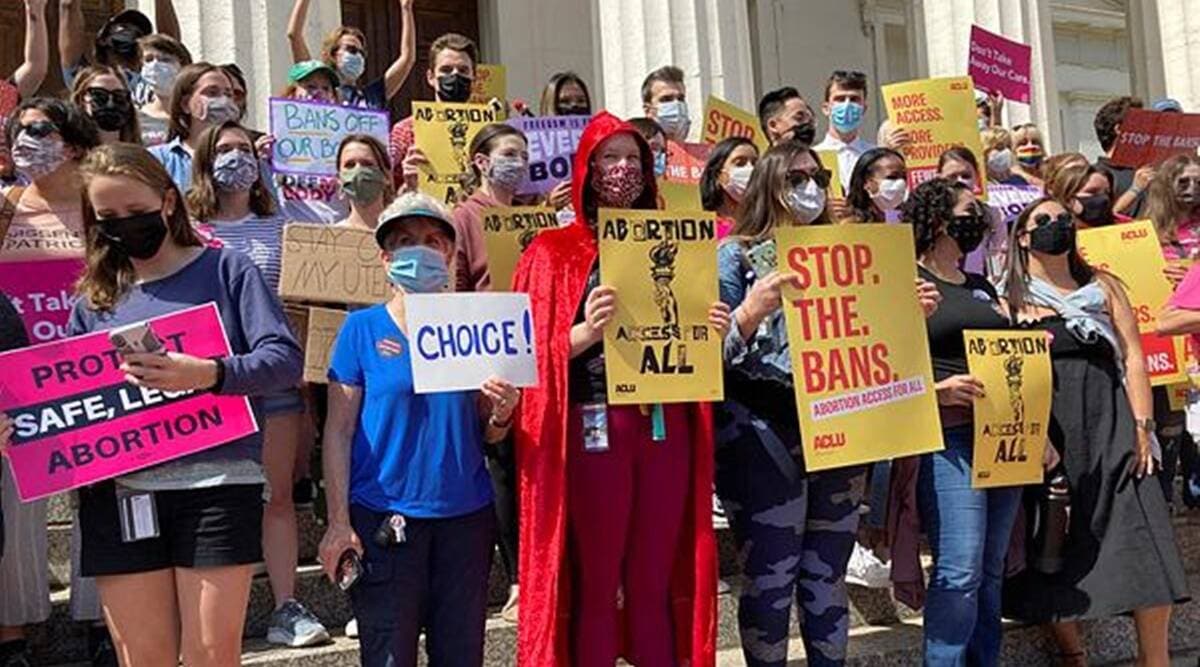 The new data was released as the Supreme Court prepares to issue a ruling that could effectively overturn the Roe v. Wade standard that has made abortion legal in the United States for nearly 50 years. (AP/File)
The new data was released as the Supreme Court prepares to issue a ruling that could effectively overturn the Roe v. Wade standard that has made abortion legal in the United States for nearly 50 years. (AP/File)The number of abortions in the United States has increased, reversing what had been a three-decade decline, according to a new report.
The uptick began in 2017, and as of 2020, 1 in 5 pregnancies, or 20.6%, ended in abortion, according to the report by the Guttmacher Institute, a research organization that supports abortion rights. In 2017, 18.4% of pregnancies ended in abortion.
The institute, which collects data by contacting every known U.S. abortion provider, reported that the number of abortions increased to 930,160 in 2020, from 862,320 in 2017. The number increased in every region of the country: by 12% in the West, by 10% in the Midwest, by 8% in the South, and by 2% in the Northeast.
The new data was released as the Supreme Court prepares to issue a ruling that could effectively overturn the Roe v. Wade standard that has made abortion legal in the United States for nearly 50 years. If the court’s final ruling is similar to a draft opinion that leaked last month, about half of the states are expected to quickly ban or sharply restrict abortion, while other states are gearing up to expand access for patients from states that make abortion unavailable.
Best of Express Premium
Overall, the new report found, that the abortion rate rose in 2020 to 14.4 per 1,000 women ages 15 to 44 from 13.5 abortions per 1,000 women of that age group in 2017, a 7 percent increase.
During this period, the report said, births nationwide declined by 6 percent, meaning that “fewer people were getting pregnant and, among those who did, a larger proportion chose to have an abortion.”
The report, which found that the number and rate of abortions increased in 33 states and the District of Columbia, said “there were no clear patterns” to explain each state’s trajectory. It suggested several reasons for the national increase, including trends that directly affected low-income people, the population most likely to seek abortions in recent years: Some states expanded Medicaid coverage for abortion, and funds that provide financial assistance to patients seeking abortions expanded.
Another factor may have been the Trump administration’s policy of preventing programs that received federal family planning money, known as Title X funds, from mentioning the option of abortion to patients. That rule caused Planned Parenthood and several state governments to decline to accept Title X funding, which may have reduced access to other family planning services, including contraception, for low-income people, and led to more unintended pregnancies, the Guttmacher report said. The Biden administration has since rescinded the Trump-era policy.
The rise in abortions came at a time when many conservative states were placing new restrictions on the procedure. But the report said that while 25 states enacted 168 abortion restrictions from 2017 to 2020, some were stopped by legal challenges and many were enacted by states that already had significant restrictions, so the new laws might not have prevented many more abortions.
At the same time, other states enacted 75 provisions to protect or expand abortion access, including by requiring insurance to cover abortion and allowing nurse practitioners, physician assistants, and certified nurse midwives to provide some abortion services, the report said.
“It shows that people in every state seek abortions despite restrictive measures in many states,” said Leslie Reagan, a historian of American medicine and public health at the University of Illinois at Urbana-Champaign.
The data included most of the first year of the coronavirus pandemic.
The report said that while abortion access was disrupted in some states during that time, both because of attempted bans and because of outbreaks and limits on in-person medical care, some states maintained access to abortion. In addition, for part of 2020, a judge’s ruling allowed abortion pills, which account for more than half of the country’s abortions, to be mailed to patients — a practice that the Food and Drug Administration made permanent in December 2021.
Reagan, who wrote a book titled “When Abortion Was a Crime,” said she believed “the severe unemployment and food insecurity that followed the shutdown” during the pandemic had also fueled the increase in abortion. “Many people couldn’t feed themselves and their existing families and knew they could not support a child.”
- The Indian Express website has been rated GREEN for its credibility and trustworthiness by Newsguard, a global service that rates news sources for their journalistic standards.

